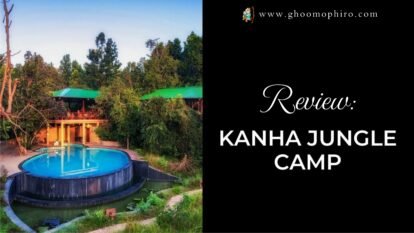A day in Dwarka – Lord Krishna’s Kingdom
Posted on January 2, 2020 by Ghoomophiro

It’s having sunk in the sea in its very gold age – a fate that is sometimes justified as punishment to hubris of its people has earned Dwarka the title of ‘Atlantis of the East’. The city has the honor of being ruled by Lord Krishna, the incarnation of Lord Vishnu. Though for God’s own city and having earned the title of one of Chaar Dhams (four most important pilgrimage places for Hindus, the other three are Badrinath Jagannath Puri and Rameswaram) after Shankarachrya’s visit to it as well as one of the Saptapuri (seven most important religious cities for Hindus) the first impression it might create will probably not be very good one.
Located on the western shore of the Okhamandal Peninsula on the right bank of the Gomti River, it is a small city with a population of about 40000 only.

When to visit Dwarka?
Winter that is October to February is the ideal time to visit Dwarka as the climate remains pleasant. The summers can be too hot while the rains can be too heavy making them far from the ideal time to visit the city.
You might, however, be willing to make the exception to be in Dwarka at the time of Lord Krishna’s birth, that is, Janmashtami. This festival is marked by several all night long celebrations as bhajans and sermons are part of the festivities. At midnight there is a reenactment of Krishna’s childhood period in the form of cultural Garba and Raas dances. The local boys would create a pyramid and a young boy in the costume of Krishna will climb up this pyramid to strike a pot holding butter reenacting one of the mischievous acts of Lord Krishna.
How to reach Dwarka?
Porbandar Airport is the nearest one. One of the reasons why you might be inclined to use the option is to be in Porbandar – the birthplace of Mahatama Gandhi. After landing here you might hire a cab or use public transportation to reach Dwarka. Dwarka also has its railway station and is well connected to major cities of the country by roadways.
Locally you must at least once try traveling on a chhakda, a rickshaw run on a motorcycle engine – the vehicle that one sees in all kinds of colors on the streets of Dwarka.
What to buy in Dwarka?
Most popular souvenirs you can buy in Dwarka include image of Dwarkadish (another name of Lord Krishna), peacock feathers, corals, toys, Indra Jal, conch shells, chakrashila (small round corals that sometimes even float in water), Gopi Chandan (the soil from Gopi Talaav) Dwarka Shila, Gomti Chakra etc.
What to eat in Dwarka?
While in Dwarka, you must at least once try Gujarati thali that has several spicey dishes like e dhokla, bakarwadi, etc. and sweet delights like Puran Poli, basundi, etc. This heavenly meal must go along with some buttermilk.
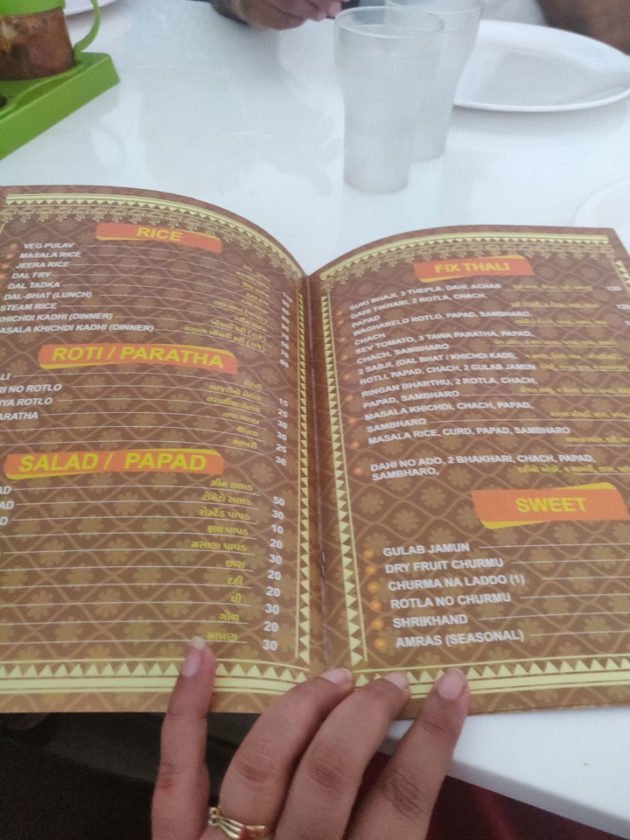

Where to stay in Dwarka?
Dwarka has several accommodation options catering to people with all sizes of pockets and preferences. One of the advantages of choosing a more luxurious hotel is that they offer amazing views of Gomati, Dwarkadesh mandir or the Arabian Sea depending on their location. We stayed at VITS Dwarka, a simple hotel with all basic amenities.
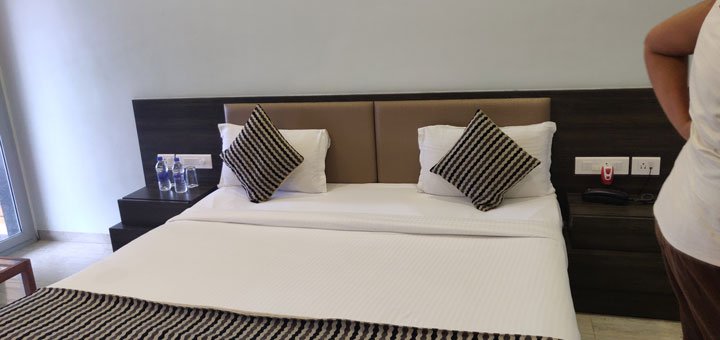
History
Dwarka is considered to be the first capital of Gujarat. It was established as the capital of Saurashtra. When Yadvas migrated to this place from Mathura, it was called Kaushathali and was over time Christine’s as Dwarka
The mythology tells us that Lord Krishna settled here fleeing Jarasandha, the king of Magadh, to avoid unknown war. A friendly population here took him as their King as it was he who had delivered them from Kansas, their cruel ruler, and son of Ugarsena, who had first established the kingdom here. It is said that Lord Krishna ran his administration from Bet Dwarka. Some archeological investigations have discovered some drowned ruins (probably drowned because of erosion) proving that the myth is not without some truth – according to the myth, Krishna is also said to have reclaimed 12 yojanas or 96 square kilometers (37 sq mi) of land were originally reclaimed by Lord Krishna from the sea to create Dwarka.
The main temple has suffered a lot at the hands of Muslim invaders and the temple was destroyed and had to be rebuilt several times.
What to see in Dwarka?
1.Chhappan Sidhi ghat (Gomati Ghat)
Near the glorious Dwarkadhish temple is Gomati Ghat which is our first stop. The ‘chappan’ or 56 refers to the numbers of steps we must climb up to the swarg dwar after a dip in the river to purify ourselves. River Gomti is believed by Hindus to be the daughter of the sage Vashishtha. You might also float oil lamps or feed flour balls to the fish. The ghat is full of small shrines dedicated to gods like Samudra (God of the Sea), Saraswati, Lakshmi, etc.
Some important temples in the ghat area include the Samudra Narayana (Sangam Narayana) temple, which is at Gomati Sangam Ghat – the point of the confluence of the Gomti River with the sea, the Chakra Narayana temple where there is a stone with an imprint of a chakra as a manifestation of Lord Vishnu’s weapon, and the Gomati temple, which has an idol of the goddess Gomati which, so the legend goes, was brought to earth by the sage Vasishta, Lakshminarayan Temple etc.
There are several other activities you can do at the Gomati river which is one of the best ways to enjoy the panoramic views of the city and the river. You can go boat riding – for a fare of mere twenty rupees between 9 AM to 4 PM. You can also go to camel riding. Plan your activities according to your schedule


Tulabhar
Tulabhar is large weighing scales that are used to make devotees able to donate food grains equal to the weight of their bodies. If you can donate seven items weighing the same as you – Wheat, Sugar, Urad Daal, Moong Daal, Desi Ghee or Clarified Butter and Oil, you will get Moksha. The ingredients are mixed to form 3 categories of donations that cost differently – that is Uttam, Madhyam and Sukshma costing Rs 120/-, Rs 80/- and Rs 40/- per kg respectively. The donation goes to widows, small temples, poor brahmins, etc.
The legend says that Satyabhama who was the third wife of Krishna was tricked by Narada to donate wealth equal to Lord Krishna’s weight. Satyabhama accepted the challenge and made Krishna sit on side of the Tulhabhar. On the other side, Satyabhama added little by little all her wealth but even all the Queen’s treasures would not match the weight of Krishna. She begged from and added the wealth from other wives but still, nothing happened. In the end, she requestee queen Rukmini to help her who put only a single leaf of Tulsi Plant and the weighing scale tilted the other way. When everything else but the Tulsi leaf was removed the scale still tilts towards the leaf. The message of the story is that you can win god only by devotion not by wealth.
Sudama Setu
Bridging the two shores of the Gomti River is the Sudama Setu – a bridge named after Lord Krishna’s best friend. It offers a panoramic view of the city and the beautiful river.

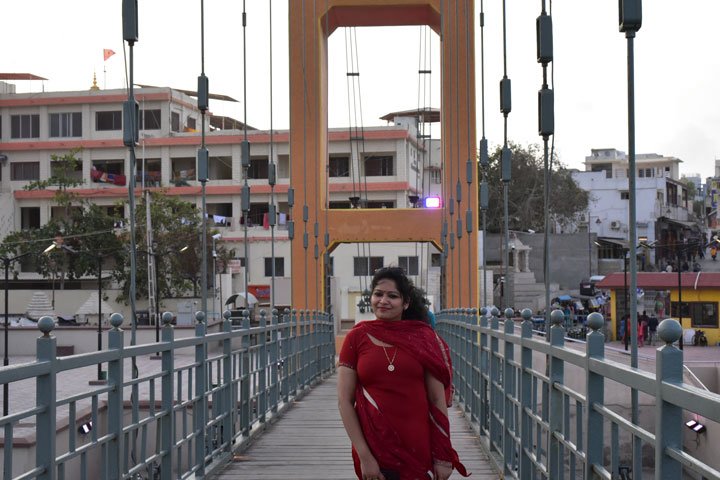
2.Dwarkadhish Temple
Having dipped in Gomti, we are now ready for the main destination of the temple – Dwarkadish temple.
This 2500-year-old temple is the most important landmark in Dwarka. Much like the Somnath temple, it is designed in Chaulkya style of Architecture.
All valuables have to be deposited at a counter before entering the temple. After that, a priest would lead the gather in exchange for a voluntary contribution he will ask for in the end.
The main shrine is five stories long and has two entrances. It was first built by Raja Jagat Singh Rathore and is hence also called Jagat Mandir.
The word ‘Dwar’ means door and word ‘Ka’ means Brahma, the Creator. In ancient times, its port was considered to be the gateway Moksha (Salvation). The main entrance to the Dwarakadhish temple, the north entrance, is thus also called Moksha Dwara (Door to Salvation).
The main idol is the one-meter tall, four-armed idol of Lord Dwarkadhish. It is made of shiny black stone and is elaborately ornamented. There are of course several other shrines devoted to other deities.
The 52-yard flag of Dwarkadhish temple (the number of yards being symbolic of administrators temple has had) is changed 5 times a day – thrice in the morning and twice in the evening. The family sponsoring the flag brings it amid a ceremonial procession full of singing and dancing. The raising is cheered blissfully by the devotees.
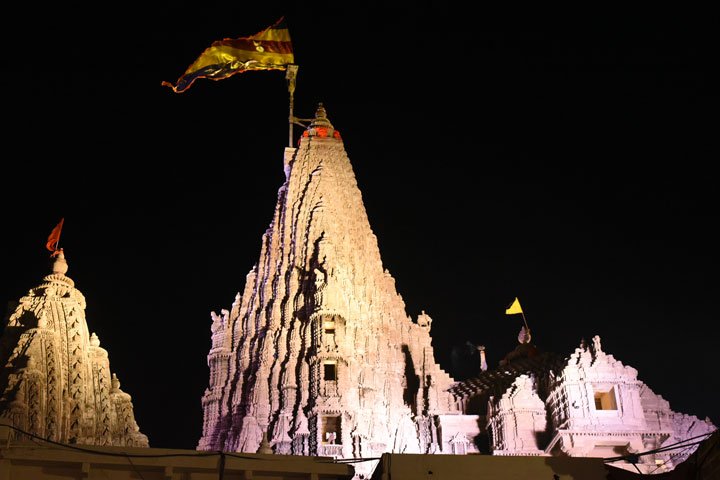
Sharda Peeth
Dwarka has the privilege of being sanctified as the seat of Adi Shankaracharya (788-820 AD), who established four maths (religious centers or seats) in four different directions in the country. The Dwarakadhish Temple is a part of the Char Dham pilgrimage considered sacred by Hindus after Adi Shankaracharya visited the shrine. Sharda Peeth withing the temple has some beautiful libraries.
Important Rules and tips that you must remember during the Gujarat Temple Tour
- You must be dressed decently while entering the temple.
- Shoes, skirts, shorts, and belts are not allowed inside the temple.
- Cameras and mobile phones are strictly prohibited. There is a space outside where you can deposit all such stuff
- The temple visiting hours are 6:30 am to 1:00 pm and 5:00 pm to 9:30 pm.
5.Flag hoisting timings: 7 AM –8:30 AM, 8:39 AM – 10:30 AM, 10:30 AM – 12:30 PM, 5:30PM.
3.Panch Peer
Next to the temple is a small shrine the Muslim name of which is a little strange given that it is devoted to five Hindu Brahmins who fought and were martyred to defend the temple against a Muslim invader Mohammad Shah in 1241 – Virajee Thakar, Nathu Thakar, Karasan Thakar, Valjee Thakar, and Devasee Thakar.
- Swami Narayan Mandir, Dwarka
Located very close to thDwarkadish temple, Swami Narayan Mandir is a divine shrine dedicated to Lord Swaminarayan, who is another avatar of Lord Vishnu.
5.Dwarka Beach, Lighthouse and lake
Very close to the Dwarkadesh temple, the beach is a great place to relax in the evening. It has a lighthouse – 43 meters high, ideal for the panoramic view which is open to visitors from 4:00 PM to 6:00 PM perfect place to enjoy the sunset.
6.Okha Port and Byet Dwarka
Once you are done with the Dwarkadesh temple you can head to Okha Port and take a jetty to the Byet Dwarka also known as Beyt Shankhodhar (after Shakhsura, a demon of the island that was killed by Lord Vishnu). Several seagulls accompany one as the ferry makes the way to its destination. Remember to carry along some food as you will want to and can feed them. Private boats are also available – expensive but hassle-free.
The island is supposed to be the administrative seat of Lord Krishna. It is also the place where Lord Krishna was reunited with his childhood best friend Sudhama. It is surrounded by several shrines while the main temple built by Guru Vallabhacharya of the “Pushtimarg Sampradaya 500 years ago. Besides Lord Krishna, you will find temples devoted to Lord Shiva, Matsya (another avatar of Lord Vishnu), Rukmini, Trivikrama, Devaki, Radha, Lakshmi, Satyabhama, Jambavati, Lakshmi Narayan, Hanuman, etc. It remains closed from noon to 5 PM. The island is probably one of the most beautiful parts of the whole state. Coral reefs, beautiful beaches, etc invite you to enjoy a stunning sunset.

A visit to the Hanuman Dandi Temple is a must once you are here. This important temple is situated around 5 km away from the main Dwarkadish Temple in Dwarka. The temple is built at the location in the place where the monkey god Hanuman and his son Makardhwaj, born from a crocodile’s swallowing a sweat drop of Hanumana, first met. The temple is unique in the sense that it is the only place in the entire country to house the idols of both Makardhwaj and Hanuman.
Hanuman Dandi temple is another important temple. The temple has many images of Hanuman and his son Makardhwaja born of his sweat that was drunk by a crocodile.
Dunny Point
Dunny Point is an incredibly awesome eco-tourism site within few kilometers of Dwarka. The sea here has rich algae beds and one can spot several species of marine animals like starfish, sponges, jellyfish, sea cucumbers, marine turtles, sea snakes, sea feathers, sea anemones, dolphins, etc. It is located on the very end of Byet Dwarka and is an ideal place for swimming, bird watching, camping, star gazing, etc.
7.Rukmani temple
Rukmani Temple is a small temple that is an almost 1600-year-old temple located in a deserted area and is dedicated to Lord Krishna’s wife Rukmini. The temple is a gigantic marvel of art and architecture with countless carvings on its walls.
The temple’s location at a distance from Dwarkadesh temple is not without a reason. According to the legend, Rishi Durvasa, who was the Kul Guru that is clan teacher of Yadavas (Krishna’s clan), lived in his ashram at Pindara which is some distance away from Dwarka. Krishna and Rukmini once went personally to his ashram to invite him for a meal at their court with all their chariots. Rishi Durvasa accepted the invitation but, on the caveat, that the chariot should not be drawn by horses or any other animals but by Krishna and Rukmini themselves to which the latter agreed.
Now Rukamni was a queen and not used to pull the chariots. After some time her throat went dry and she looked pleadingly at her husband who understood her need. He tapped his right toe on the earth and it brought out Ganga water. She had her fill of water but was so eager that she forgot to make an offering of it to Rishi Durvasa first according to the tradition. Durvasa who was known for his bad temper cursed them to get forced to live apart. Even now their temples stand apart.
Rukmini Patra
In the temple, you will find a printed version of Rukamani Patra which is a sort of love letter written by Rukmani.
The legend says she was originally to be married to Sisupala the king of Chedi but, having heard high praises of Sage Narada, she fell in love for him and decided to marry him.
This is when she wrote a love letter to him – praising him, showing her intention to marry him and asking him to kidnap her in the middle of wedding proceedings. Finally, knowing the possibility of bloodshed that might be caused, she tells him if he does not come, she will wait for him all her life. The whole letter is contained in Severn Sanskrit shlokas (the printed version of the letter offers their Hindi translation too).
This letter is read to Dwarkadish at his temple every night before he is out to sleep. If you are a woman who wants to marry a particular man then reading this letter might help your chances.
As per the plan, Krishna did kidnap her and they got married at Madhavpur Khed a village near Porbandar next to the sea on the Ekadashi or the 11th day of the fortnight of Chaitra month and then married again in Dwarka.
The wedding celebration continues to be held here as a procession would leave from Dwarkadesh temple to Rukmani temple.
8.Nageshwar Jyotirlinga Temple
Nageshwar Jyotirlinga Temple is one of the 12 Jyotirlingas as mentioned in the Shiv Purana. Unlike other Shiva linga, the linga here is made of Dwaraka Shila, a porous stone marked with small wheels, found in the Gomati creek. The shape of the linga here is different from others. Located in the Deodar vegetation, it also houses a majestic 80-feet Shiva. The temple is opened between 06:00 a.m. and 07:00 p.m.
Nageshvara Jyotirlinga Mandir is a temple dedicated to Shiva, and one of the twelve Jyotirlingas (meaning the radiant sign of The Almighty) is deified here in a subterranean cell.
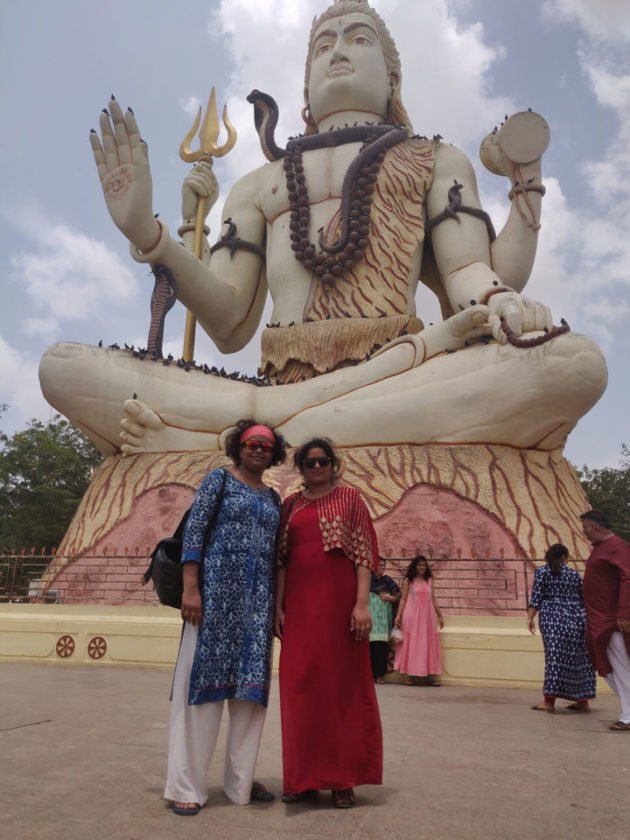
Timings: 6 AM to 12:30 PM; 5 PM to 9:30 PM
9.Gopi Talao
Gopi Talav is just 4 km from the Nageshwar Jyotirlinga Temple. It is a pond that is linked to Lord Krishna’s childhood friends – gopis who could not bear the separation after Lord Krishna moved to Dwarka and thus were reunited with him here on the night of Sharad Purnima (full moon) where they would dance and play with him. The Gopis later merged into the soil and turned into yellow clay, known as Gopi Chandan.
10.Bhadkeshwar Mahadeva Temple
Bhadkeshwar Mahadev Mandir is dedicated to Lord Shiva and is nearly 5000 years old. It was built around a self-manifested Shivaling found in the Arabian Sea. It gets submerged in the sea during monsoons. It is one of the best places to see the sunset in Dwarka.

- Gita Temple
Constructed by the Birla group in 1970 to propagate the teachings and values extolled in the Bhagwad Gita, the Geeta temple is a simple and elegant structure made of marble close to Bhadkeshwar Mahadev Temple. walls are inscribed with verses from the holy book. It also offers accommodation options for pilgrims
Nearby Places
- Somnath
A trip to Dwarka is often coupled with Somnath because of the religious importance of both these places. Somnath temple is the very first of 12 Jyotirlingas and one of the most important temples for Hindus and is another important place for pilgrimage located at a distance of 257 kilometers from Dwarka, to be covered by road.
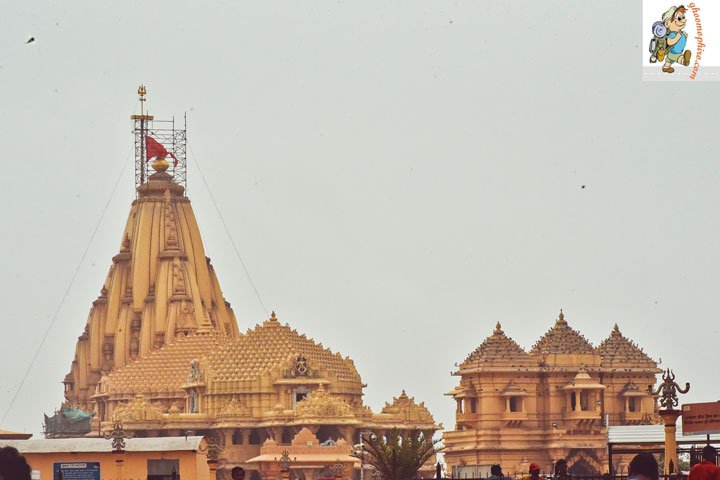
- Madhavpur Beach
The place where Lord Krishna married Rukmani, this beach falls on the way from Dwarka to Somnath and is one of the best beaches in Gujrat.
- Porbandar
The birthplace of Mahatama Gandhi falls on the way from Dwarka to Somnath.
- Mool Dwarka
Mool means ‘root’ And this is supposed to be the spot where Lord Krishna rested before reaching Dwarka.
- Gir National Park
Located at a distance of 70 kilometers from Somnath and 281 kilometers from Dwarka, this National provides you an amazing opportunity to see Asiatic lions among other exotic animals.
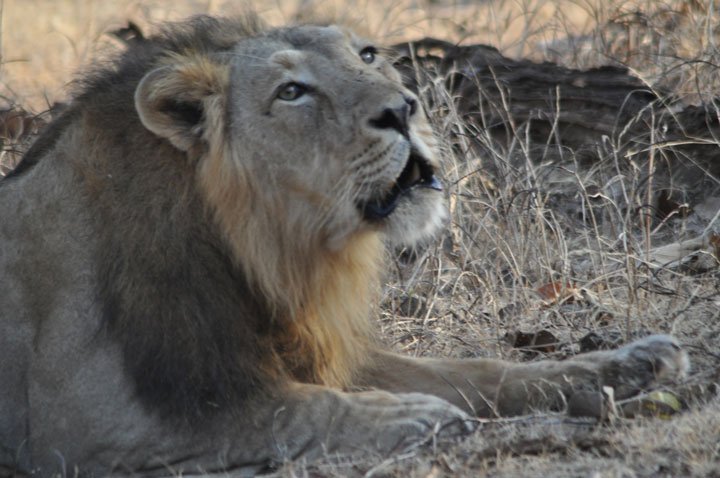
Conclusion
This is all from us on God’s city Dwarka. We hope you loved this article. 🙂


